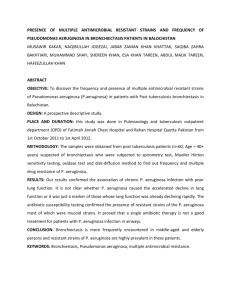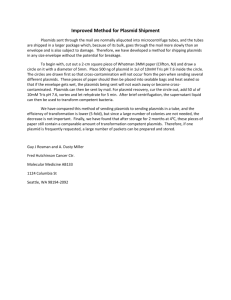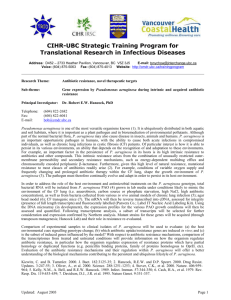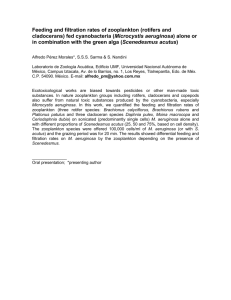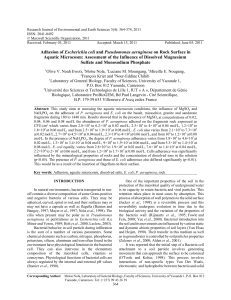Supporting Text S1
advertisement
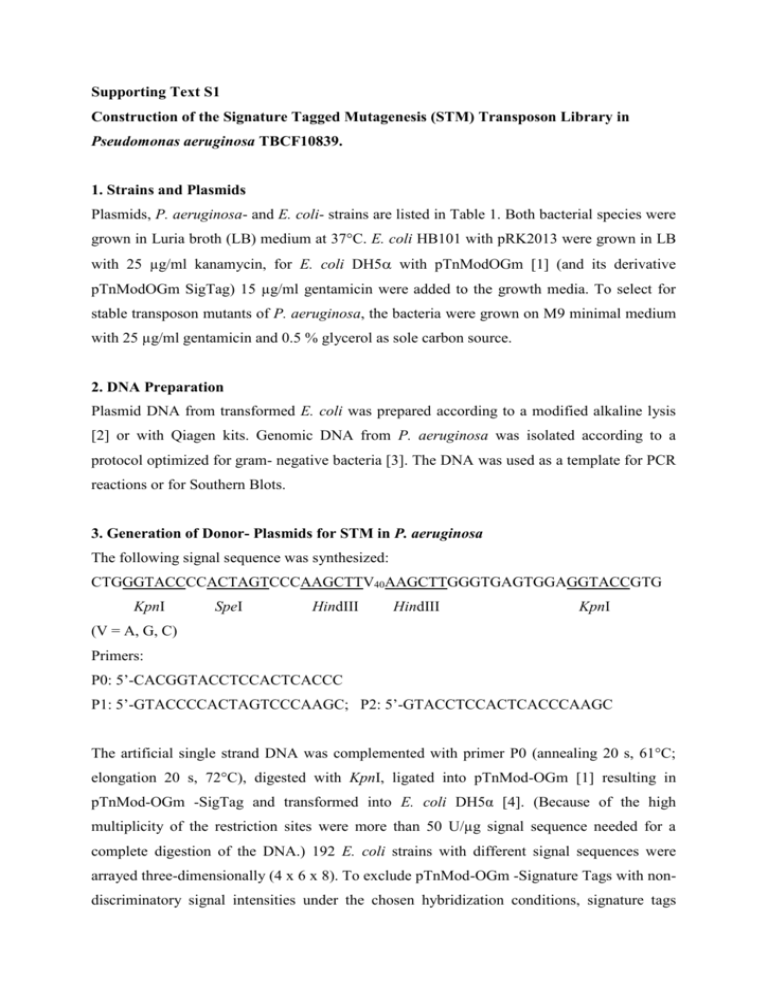
Supporting Text S1 Construction of the Signature Tagged Mutagenesis (STM) Transposon Library in Pseudomonas aeruginosa TBCF10839. 1. Strains and Plasmids Plasmids, P. aeruginosa- and E. coli- strains are listed in Table 1. Both bacterial species were grown in Luria broth (LB) medium at 37°C. E. coli HB101 with pRK2013 were grown in LB with 25 µg/ml kanamycin, for E. coli DH5 with pTnModOGm [1] (and its derivative pTnModOGm SigTag) 15 µg/ml gentamicin were added to the growth media. To select for stable transposon mutants of P. aeruginosa, the bacteria were grown on M9 minimal medium with 25 µg/ml gentamicin and 0.5 % glycerol as sole carbon source. 2. DNA Preparation Plasmid DNA from transformed E. coli was prepared according to a modified alkaline lysis [2] or with Qiagen kits. Genomic DNA from P. aeruginosa was isolated according to a protocol optimized for gram- negative bacteria [3]. The DNA was used as a template for PCR reactions or for Southern Blots. 3. Generation of Donor- Plasmids for STM in P. aeruginosa The following signal sequence was synthesized: CTGGGTACCCCACTAGTCCCAAGCTTV40AAGCTTGGGTGAGTGGAGGTACCGTG KpnI SpeI HindIII HindIII KpnI (V = A, G, C) Primers: P0: 5’-CACGGTACCTCCACTCACCC P1: 5’-GTACCCCACTAGTCCCAAGC; P2: 5’-GTACCTCCACTCACCCAAGC The artificial single strand DNA was complemented with primer P0 (annealing 20 s, 61°C; elongation 20 s, 72°C), digested with KpnI, ligated into pTnMod-OGm [1] resulting in pTnMod-OGm -SigTag and transformed into E. coli DH5α [4]. (Because of the high multiplicity of the restriction sites were more than 50 U/µg signal sequence needed for a complete digestion of the DNA.) 192 E. coli strains with different signal sequences were arrayed three-dimensionally (4 x 6 x 8). To exclude pTnMod-OGm -Signature Tags with nondiscriminatory signal intensities under the chosen hybridization conditions, signature tags pooled from the planes, rows and columns of the array, respectively, were amplified by PCR, digested with HindIII (with the above mentioned parameters) and purified by gel filtration. Probes were prepared by using a DIG- ddUTP 3´-end labelling kit (Roche), hybridized against dot blots containing all 192 pTnMod-OGm SigTags (62°C, 16 h) and detected with CDP- Star (Tropix, Roche). 48 plasmids with comparable signal strength and specific hybridization signals were chosen for the construction of the STM- library in P. aeruginosa. 4. Generation of P. aeruginosa TBCF10839- Transposon Mutants P.aeruginosa TBCF10839 were incubated on Columbia agar containing 5% sheep blood at 42°C for five days and transferred to new agar plates each day. After this preincubation period, the P. aeruginosa were resuspended in 10 mM MgSO4 to an optical density of 1 OD (λ= 578 nm). Overnight cultures of E. coli carrying the pTnMod-OGm -SigTag (donor- strain) and pRK2013 (helper- strain) [5] were also resuspended in 10 mM MgSO4 to a final concentration of 1 OD. P. aeruginosa, donor- and helper- strains were mixed in a ratio of 1 : 10 : 10, plated on LB agar and were incubated overnight at 37°C. The bacteria were recovered from the plate and resuspended in 5 ml 10 mM MgSO4 and P. aeruginosa transposon mutants were selected on M9 -minimal media containing 0.2 % glycerol as a sole carbon source and 25 µg/ml gentamicin. The plates were maintained first for 3 days at 37°C and then for a further 6 weeks at 4°C. This procedure ensured complete suppression of contaminating viable E. coli, because E. coli can ferment glycerol but does not grow on glycerol in M9 medium and loses viability during extended storage at 4 °C. Comments a. Signature Tags. We used V40 (V=A,G,C) as the signature tag, because first, it matches the GC- content of the bulk P. aeruginosa genome and second, V40 sequences contain virtually no recognition sites for the common restriction endonucleases. b. We constructed the library with the plasposon pTnModOGm [1] because it is episomally stable in most E. coli and the transposed sequence can be mobilized from the P. aeruginosa host by plasmid rescue. c. Selection of tags. Of 192 signature tagged plasmids, about 10% of the synthesized oligonucleotide tags cross- hybridized with others and another 50% of the tags yielded low signals under stringent hybridization conditions. The library was constructed with the remaining 40% of tags. References 1. Dennis JJ, Zylstra GJ (1998) Plasposons: modular self-cloning minitransposon derivatives for rapid genetic analysis of gram-negative bacterial genomes. Appl Environ Microbiol 64: 2710-2715. 2. Birnboim HC, Doly J (1979) A rapid alkaline extraction procedure for screening recombinant plasmid DNA. Nucleic Acids Res 7: 1513-1523. 3. Chen WP, Kuo TT (1993) A simple and rapid method for the preparation of gram negative bacterial genomic DNA. Nucleic Acids Res 21: 2260. 4. Inoue H, Nojima H, Okayama H (1990) High efficiency transformation of Escherichia coli with plasmids. Gene 96: 23-28. 5. Figurski D, Helinski D (1979) Replication of an origin-containing derivative of plasmid RK2 dependent on a plasmid function provided in trans. Proc Natl Acad Sci U S A 76: 16481652. Table 1: Bacterial strains and plasmids Strains Genotype and/or Source E.coli DH5α F’ (endA1 hsdR17(rK-mK+)supE44 thi-1 recA1 gyrA relA1 Δ(lacYZA-argF)U169(m80lacZΔM15) E.coli HB101 leuB6 thi-1 lacY1 hsdSB20 recA , rpsL20 ara-14 galK2 xyl-5 mtl-1 supE44 mcrBB Δ(gpt-proA)62 Reference P. aeruginosa TBCF10839: CF airways, serotype 4; pyocin type: 1h, phage lysotype:F8, M4, PS2, PS24, PS31, 352, 46b/2, 1214, Col21, F7, F10, PS21, PS73, no plasmids Plasmids pTnModOGm GmR, mini-Tn5 plasposon pTnModOGm SigTag pTnModOGm with Signature Tag pRK2013 KmR, conjugation vector for triparental mating [1] This work [5]


